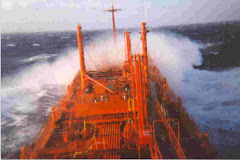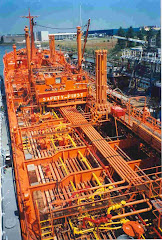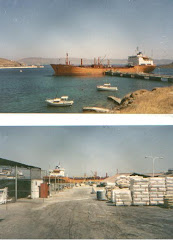Pyxis marked the first time a Greek managed shipping company became publicly listed via a reverse merger. They are merging with a San Francisco-based tech outfit LookSmart, already listed.
It was a novel entry to public markets by a small product tanker company, who failed to develop sufficient interest in a previous attempt to do an initial public offering.
Will this entry allow them to raise capital in public markets as they would like, or will it prove in the end nothing more a Pyrrhic victory that simply increases administrative expenses for the public listing without any benefits to capital markets access for fund raising?
Present conditions in capital markets this year have not been easy for fund raising in shipping ventures. Enthusiasm and interest among institutional investors to put money on shipping assets has waned considerably over the past two years. Funding for expansion has reverted again to traditional bank financing. The market has become generally very selective on shipping projects.
Investors have been burned by bad positions in dry cargo shipping companies, where the markets turned against them, ship values have declined and these companies are making substantial operating losses.
Even in the tanker sector, which is doing quite well this year with resurgence in freight rates and cargo volumes, investor interest is limited only to a handful of large tanker companies. Conversely, a number of private equity joint ventures are putting their tanker assets on the market for sale to monetize their positions.
Pyxis would probably never have succeeded in their reverse merger operation without the support of Larry Glassberg at Maxim Securities. Maxim is mid-sized investment banking firm that has not only a base of institutional investors but also a substantial base of retail investors. Glassberg has an exceedingly long experience in the investment bank industry and shipping operations.
Pyxis did not attract sufficient interest for an IPO (initial public offering) because it is a relatively small operation with a fleet of six MR product tankers, two smaller chemical feeder tankers and one MR new order yet to be delivered. Vessel age ranges from three units built in the late 2000’s to a small two-vessel MR NB order of which one unit has been delivered.
The company is certainly on the right side of the market in product tankers, but they face much larger peer companies like Ardmore and Scorpio Tankers. Major established companies like BW Pacific and Hafnia Tankers would like to list publicly, but are themselves constrained to wait for improved market conditions to do an IPO listing. It’s only a matter of stock flotation, but also obtaining favorable valuation with their listed peer tanker companies still trading below or close to NAV despite a surge in profits. This was a basic hurdle that Wilbur Ross was not willing to accept in the case of Diamond S going public.
Vessel values have improved but still remain below what would be expected given current earnings. Part of this may also be due to the restricted bank financing market, where loans are given only to existing customers and preference to larger clients.
The true test here will be if Pyxis can leverage their public listing to raise capital to facilitate growth. That is clearly the motivation of Pyxis for the costs and increased administrative expense of a publicly listed company. With a fleet of eight vessels, they will have to absorb additional administrative expenses of at least US$ 800.000 to 1.000.000 annually.
Pyxis as a listed company has an estimated US$ 70 million market cap, of which US$ 66 million will be controlled by its principal, Eddie Valentis. The remaining US$ 4 million of stock has traded less than $100,000 per day. Pyxis remains essentially a private company under total control of its owner. It has no trading volume and will not attract any analyst coverage.
Going into the market to raise capital, the valuation issue becomes critical. Pyxis will likely trade at a discount to NAV [net asset value] and to established companies like Ardmore Shipping or Scorpio Tankers. Should investors put a low valuation, what will be the appetite of the principal shareholder, Eddie Valentis, to dilute his personal share holdings, selling his stock to investors at a discount?
Of course, there are other means to raise capital. Pyxis could look to bond issues, for example. Financial expense will be higher than a conventional bank loan, but amortization schedules may be more favorable, providing more free cash flow liquidity that could be reinvested in further expansion. They could also consider convertible bonds or CoCo’s that would get around the share dilution conundrum.
At least, Pyxis is on the right side of the market in the tanker sector. They have a relative young fleet. This listing operation may prove a spring board for future growth, depending on the quality of incremental investment that they take to market for investor support and the prevailing market appetite to invest in the shipping sector.








